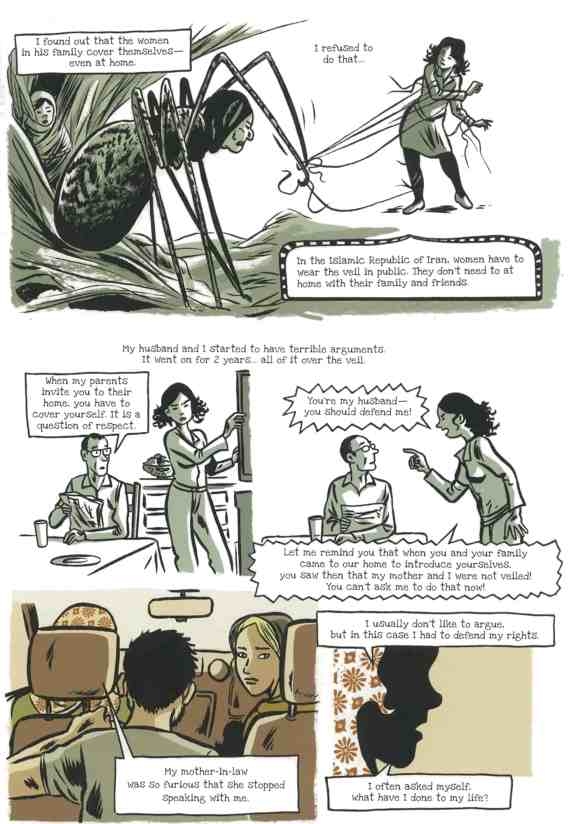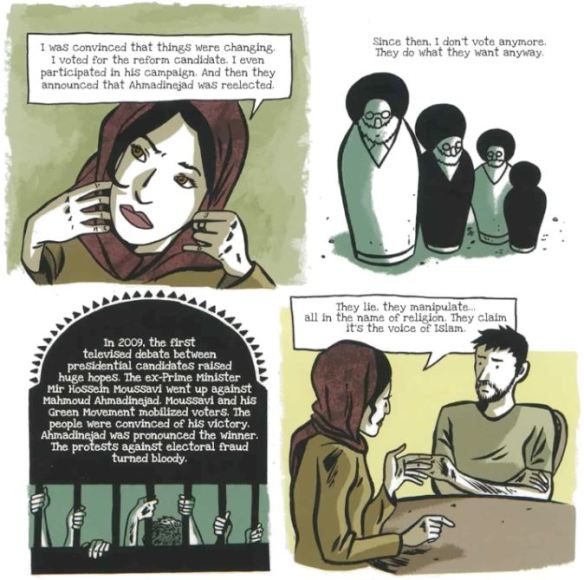CUPE to stage provincewide protest Friday in response to Ontario's ban on strike
TORONTO — A union representing approximately 55,000 Ontario education workers said Monday its members will walk off the job on Friday despite the government tabling legislation to impose contracts and ban a strike.

Ontario to introduce education contract today to avert looming support staff strike
Laura Walton, president of the Canadian Union of Public Employee's Ontario School Board Council of Unions, said whether workers continue to protest after Friday "will be left up to what happens."
"I am so proud because our members have said, 'Enough is enough,'" Walton said.
The Ontario government introduced legislation Monday to impose a contract on CUPE's education workers -- including librarians, custodians and early childhood educators -- and avert a strike that was set to start Friday.
CUPE has said it will explore every avenue to fight the bill, but the government said it intends to use the notwithstanding clause to keep the eventual law in force despite any constitutional challenges. The clause allows the legislature to override portions of the Canadian Charter of Rights and Freedoms for a five-year term.
"We want to make sure that there's no issues, litigation or otherwise, that could essentially get these kids back out of class because of strikes locally or provincially," Education Minister Stephen Lecce said.
"This proposal, this legislation, provides absolute stability for kids to the extent we can control it and ensures they remain in a classroom, that nothing, nothing at all now or in the future could prevent a child's right to be in a classroom learning."
The government had been offering raises of two per cent a year for workers making less than $40,000 and 1.25 per cent for all others.
Lecce said the new, four-year deal would give 2.5 per cent annual raises to workers making less than $43,000 and 1.5 per cent raises for all others.
CUPE has said its workers, which make on average $39,000 a year, are generally the lowest paid in schools and it has been seeking annual salary increases of 11.7 per cent.
CUPE Ontario president Fred Hahn said workerswere in a legal strike position as of this Thursday and they will take a stand for public education.
"If that bill passes before Friday it doesn’t matter. If they say it’s illegal to strike then we will be on a political protest," he said.
Hahn said education workers were subject, a decade ago, to an imposed wage freeze and back-to-work legislation from the then-Liberal government, and more recently legislation by the Ford government that capped public sector employees' wage increases at one per cent a year.
"We may in fact, challenge this in court, but we are first going to challenge it in our communities. We are not going to allow our rights to be legislated away. We are not going to simply stand by and accept this attempt by the government to bully our members," he said.
Related video: CUPE serves province with strike notice for Ontario education workers
CUPE serves province with strike notice for Ontario education workers
At least four Ontario school boards have said they would shut down schools if support staff fully withdraw their services. The Toronto District School Board said in an update late Monday that it will have no option but to close all of its schools Friday.
"Student supervision and safety are our top priorities and without the important services of these school-based employees, we cannot guarantee that our learning environments will remain safe and clean for all students," the board said in its statement.
Lecce said it was "regretful" to hear that CUPE plans to walk out despite the legislation.
"It is certainly our intention that kids will be in school, we will pass a law, and obviously, I think there's not a parent in this province who would be supportive of children staying home for even one day of the strike," he said.
The legislation sets out fines for violating a prohibition on strikes for the life of the agreement of up to $4,000 per employee per day, while there are fines of up to $500,000 for the union.
Walton said the union would foot the bill for any such fines.
David Doorey, a York University professor specializing in labour and employment law, said there has been only one other Canadian use of the notwithstanding clause in back-to-work legislation — in Saskatchewan in the 1980s — but the law has changed dramatically since then.
"Today, the Charter protects a right to collective bargaining and to strike," he said.
"As a result, the Ontario government requires the notwithstanding clause to protect itself from a lawsuit...Almost certainly, the new Keeping Students in Class Act would violate the Charter rights of the educational workers."
Noa Mendelsohn Aviv, executive director of the Canadian Civil Liberties Association, said the notwithstanding clause was never meant to be used in contract negotiations.
"This misuse, and the flagrant disregard for individual rights is wrong and it is dangerous to our constitutional democracy," she said in a statement.
The four major teachers' unions are also in the midst of contract negotiations with the government and the Elementary Teachers' Federation of Ontario said Monday that it walked away from the table for the day in support of CUPE.
"We unequivocally condemn the Ford government’s imposition of a concessionary contract on some of the lowest-paid education professionals working in Ontario’s schools," ETFO president Karen Brown wrote in a statement.
The average CUPE employee makes $26.69 an hour. There are vast differences in workers' salaries, even in the same job classification, due to the number of hours worked in a week — some employees work 40, others work 35, while some work less than that — differences in boards, as well as some employees getting paid for 12 months a year while others are laid off for the summers.
The Ontario Secondary School Teachers' Federation said it stands in solidarity with CUPE members against the "undermining" of their collective bargaining rights. The union said its focus remained on making progress at the bargaining table in its own negotiations.
Government House Leader Paul Calandra said the legislature would be in session Tuesday at 5 a.m. in order to speed up passage of the legislation.
CUPE and the government had made little progress at the bargaining table over the past few months other than agreeing to standardizing bereavement leave. They were far apart on wages, with CUPE saying an additional $3.25 an hour would help the lowest-paid education workers catch up after years of wage freezes and restraint, as well as high inflation.
Lecce had framed their proposals as a 50-per-cent increase in compensation, which added together the wage requests, overtime pay, preparation time, an extra week of work, and professional development.
This report by The Canadian Press was first published Oct. 31, 2022.
Allison Jones, The Canadian Press
CBC/Radio-Canada
The union representing some 55,000 Ontario education workers says its members will walk off the job Friday in a province-wide protest, regardless of Ontario's proposed anti-strike legislation.
At a news conference Monday, the union said education workers will "withdraw their labour" to protest against the move by the province, which they called a "monstrous overreach."
The Ontario government introduced the Keeping Students in Class Act on Monday, which invokes the notwithstanding clause to impose a contract on education workers and avert a strike. The clause — or Section 33 of the Charter of Rights and Freedoms — gives provincial legislatures or Parliament the ability, through the passage of a law, to override certain portions of the charter for a five-year term.
Education workers could face fines of up to $4,000 per day should they strike, the legislation states.
The union held the news conference hours after the provincial government announced it plans to bring in legislation to block the potential job action.
CUPE has said they will explore every avenue to fight the bill, but the government said it intends to use the notwithstanding clause to keep the eventual law in force despite any constitutional challenges.
Speaking to reporters Monday afternoon, Ontario Education Minister Stephen Lecce called the union's decision to proceed with striking "unacceptable."
"The government has been left with no choice but to take immediate action today," Lecce said, indicating the union rejected its latest offer, adding he believes the legislation is in fact constitutional.
The government had been offering raises of two per cent a year for workers making less than $40,000 and 1.25 per cent for all others. Lecce said the new, four-year deal would give 2.5 per cent annual raises to workers making less than $43,000 and 1.5 per cent raises for all others.
CUPE has said its workers, which make on average $39,000 a year, are generally the lowest paid in schools and the union has been seeking annual salary increases of 11.7 per cent.
"The government is going to pass the bill. We're going to move forward," said Lecce.
The education minister said its move was not a blanket approach, saying it will continue to negotiate with other education unions.
Unclear how long protest could go on
As for whether the job action will run longer than one day, union officials said that remains to be seen.
The union also said it will come up with financial support for any consequences that workers might face for protesting in the face of the legislation.
On Sunday, education workers represented by the Canadian Union of Public Employees (CUPE) gave the required five days' notice for job action, positioning its members — including educational assistants, custodians and early childhood educators, but not teachers — to go on full strike as early as Friday.
Several Ontario school boards have said they will shut down schools if support staff withdraw their services.
The government and education workers returned to the bargaining table Sunday afternoon but there doesn't appear to have been any progress since.
Union officials said the province's offer put forward Sunday would have provided only a nickel more for each worker, giving the union an ultimatum. Instead of the government holding a negotiation, officials said they learned the government intended to legislate against a strike if the union didn't acquiesce.

Laura Walton, dressed as Rosie the Riveter on Halloween, speaking at Queen’s Park in Toronto on Monday.© Evan Mitsui/CBC
"If Stephen Lecce cared about kids, he wouldn't have handed $200 to parents," said CUPE member Laura Walton, dressed in a Rosie the Riveter Halloween costume, an American character representing women who worked in factories and shipyards during the First World War — a choice she said was intended to send a message.
Still, she said, "negotiations aren't done."
ETFO walks away from bargaining Monday
Meanwhile, in a news release Monday, the Elementary Teachers' Federation of Ontario said it "unequivocally" condemned the Ford government's move.
The union representing some 83,000 Ontario elementary teachers said it ended its own negotiations with the government for Monday because it could not "in good conscience, sit across the table from the government," ETFO President Karen Brown said.
"ETFO stands with CUPE members and their right to strike for better pay and working conditions, and not with a regressive government that is cloaking anti-labour legislation as being pro-education," said Brown.
The Ontario Secondary Schools Teachers' Federation (OSSTF) also issued a statement, calling the proposed legislation "heavy-handed," "effectively undermining and disrupting their rights to free and fair collective bargaining."
The union, which represents more than 60,000 members across Ontario says it "stands in solidarity" with CUPE's members, but that its focus remains on its own negotiations with the province.
"We continue to call on the Ford government to work within a fair process that respects and upholds all workers' Charter rights, and to invest in public education and negotiate a fair deal," OSSTF President Karen Littlewood said.
By Colin D'Mello Global News
Updated October 31, 2022

The Ford government will introduce legislation on Monday to impose a four-year contract on thousands of education support workers in order to avoid a strike — a move that will likely trigger a court challenge by the union.

The dramatic escalation in the months-long contract negotiations came after the Canadian Union of Public Employees, which represents 55,000 custodians, clerical staff, librarians, and early childhood educators, gave the government its notice to strike on Friday, Nov. 4.
READ MORE: Education workers rally outside Toronto Congress Centre ahead of Doug Ford event
CUPE’s Laura Walton characterized the offer as an “ultimatum” from the Ford government after months of negotiations.
The government’s latest offer, which will now be legally imposed on union workers, would give employees earning less than $43,000 a 2.5 per cent salary increase per year, while those earning above $43,000 would receive a 1.5 per cent yearly increase in pay.
That is a slight increase from the previous offer, which was 1.25 per cent for those making over $40,000 and 2.0 per cent for those making below that.
CUPE asked the government for an 11 per cent increase in wages, citing the high cost of living and historically low pay.
READ MORE: Mediated contract negotiations between government and CUPE break down ahead of strike deadline
In a statement, Education Minister Stephen Lecce said the government presented a “generous” offer and was going to follow through on a promise to keep students in class.
“Because CUPE refuses to withdraw their intent to strike, in order to avoid shutting down classes we will have no other choice but to introduce legislation tomorrow, which will ensure that students remain in-class to catch up on their learning,” Lecce said.
The union, however, is warning the government it could end up in court over the legislation and questions whether the government negotiated in good faith.
“They had the legislation all drawn up, which proves they had no intention of negotiating fairly with education workers,” Walton said at a late Sunday news conference.
While Lecce has been warning for weeks that government wouldn’t allow a strike to proceed given several years of school disruptions due to COVID-19, the Minister always maintained his mandate from the Premier was to reach a negotiated settlement with the union.
But as contract talks stalled, the government shifted its tone and focused more on preventing a strike rather than being able to reach a deal.
The legislation, set to be tabled at 1 p.m. Monday, is also a “signal” to teachers’ unions, a source said, which are still in the early stages of bargaining with the government.
“Our intentions are clear,” the source said of the government’s plans of imposing contracts on other education-sector unions.
By imposing a contract, Premier Doug Ford will be copying former-premier Dalton McGuinty’s work from 2012, when the Ontario Liberals imposed a contract on teachers’ unions ahead of a strike.
Bill 115, Putting Students First Act, froze wages and limited union members’ right to strike, triggering a court challenge by five education sector unions.
An Ontario Superior Court judge later ruled that Bill 115 “substantially interfered with meaningful collective bargaining” and that the process of imposing a contract was “fundamentally flawed.”
READ MORE: Wynne says legislation that imposed contracts on teachers in 2012 was ‘problematic’
“It could not, by its design, provide meaningful collective bargaining. Ontario, on its own, devised a process. It set the parameters which would allow it to meet fiscal restraints it determined and then set a program which limited the ability of the other parties to take part in a meaningful way,” Judge Thomas Lederer wrote in a 2016 judgment.
Earlier this year the Elementary Teachers Federation was awarded a $103-million “remedy” to distribute to former and current members of the union.
Once the Ford government tables the legislation they will have just four days to pass the legislation, in order to avoid CUPE’s province-wide strike currently scheduled for Nov. 4.


















